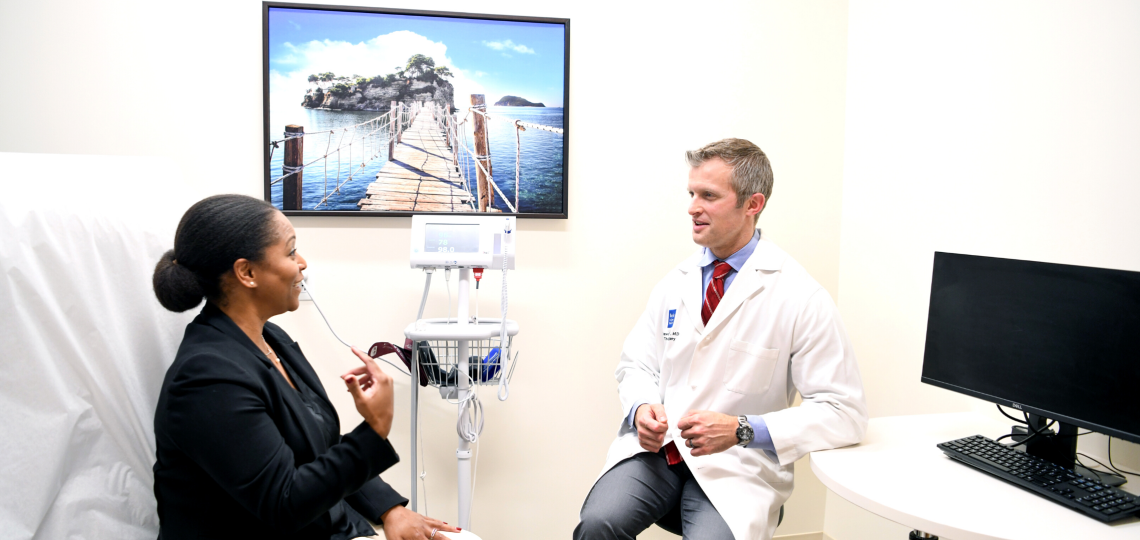
Staging for Esophageal Cancer
As is the case for all other cancers, treatment of and survival from esophageal cancer depends on its stage. Cancer staging depends on information about the:
- Tumor (T stage)
- Lymph nodes (N stage)
- Spread to the rest of your body (M stage)
Staging Methods
In order to provide you with the best treatment possible, staging must be as accurate as possible. Staging typically includes:
- Computed tomography (CT) or positron emission tomography (PET)/CT
- Endoscopic ultrasound (EUS)
- Staging procedure for potential surgical candidates
These methods complement each other. Together, they provide the most current accurate assessment of the stage of your cancer and help us individualize your treatment.
Procedures
A staging procedure includes multiple small procedures. To provide you with efficient care, all the procedures are performed on the same day during one anesthesia setting while you are asleep.
These procedures include:
- Bronchoscopy
- Esophagogastroduodenoscopy (EGD)
- Staging laparoscopy with or without jejunostomy feeding tube placement
- Long-term access port placement
Staging Laparoscopy
A staging laparoscopy procedure allows us to examine the tumor closely. We will make four or five small incisions in your abdomen and fill it with carbon dioxide. The gas, which is injected with a needle, pushes the abdominal wall away from the organs so that the surgeon can see them clearly and examine the tumor.
First, we will determine whether the tumor has spread beyond the tissues that we can remove during an esophagectomy, such as those from the liver, the inner lining of the abdomen (the peritoneum), or the fatty apron of tissue that drapes off the lower edge of your stomach (the omentum). We will also look for cancerous fluid inside the abdomen (malignant ascites). Patients with cancer that has spread to these areas are usually not candidates for an esophagectomy. These cancers are better treated with chemotherapy. During this inspection, we will occasionally find evidence of cancer spreading that was missed with a PET/CT.
Second, we will look for involvement of the tumor with surrounding structures and for large, bulky lymph nodes. This will help us decide whether or not to recommend radiation therapy.
Finally, we will look at the surface of the stomach to determine whether or not the stomach can be used to make a new esophagus. This will be necessary if you undergo an esophagectomy. Depending on what we see, we may or may not perform biopsies.








